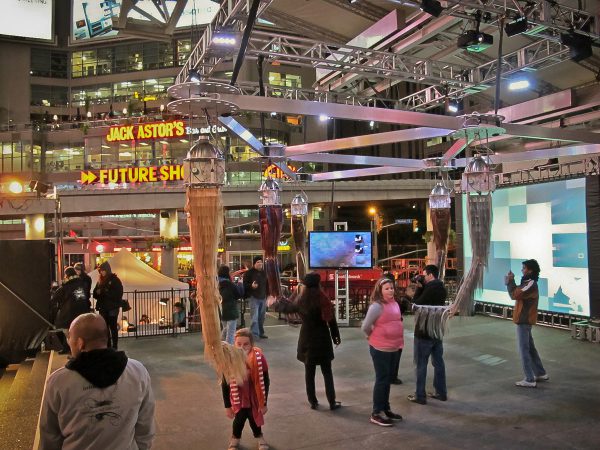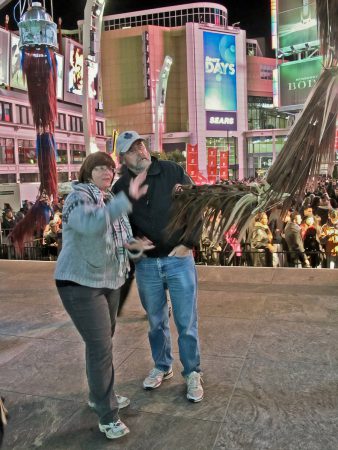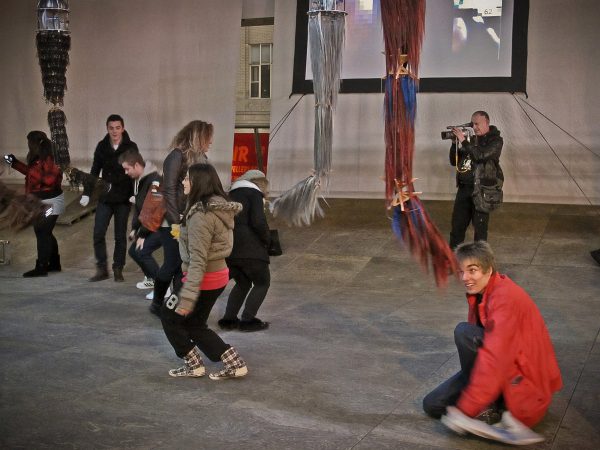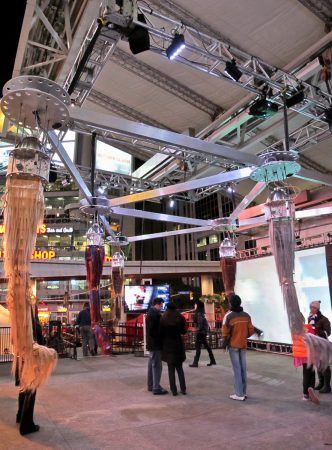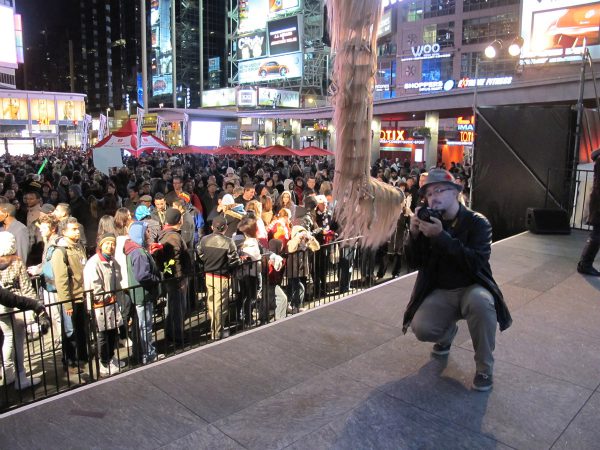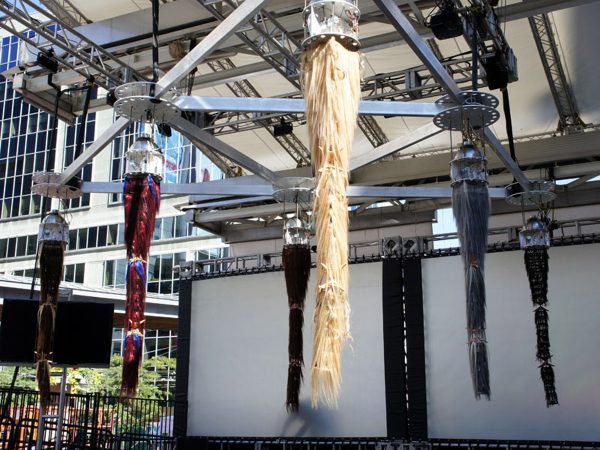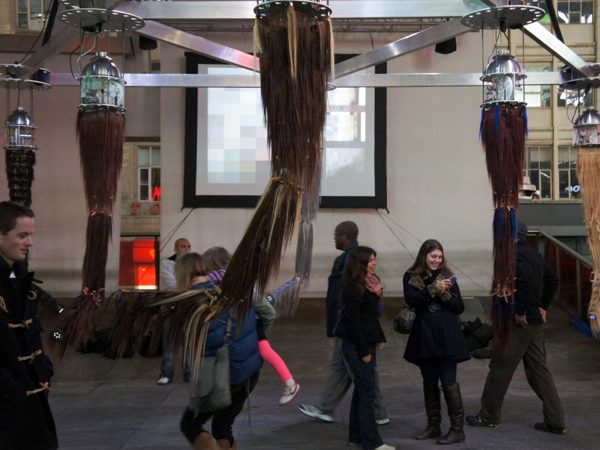Fusiform Polyphony (Face Music) is a series of six artificially intelligent robotic sculptures commissioned by Nuit Blanch Toronto and curated by Shirley Madill. Fusiform Polyphony composes music with input from participants’ facial images.
Micro video cameras on the tips of these soft robots, covered in human hair, move toward people’s faces while capturing human snapshots. These images are digitally processed, pixelated, and turned into a constantly evolving generative soundscape, where facial features turn these images into abundant sound melodies and rhythm.
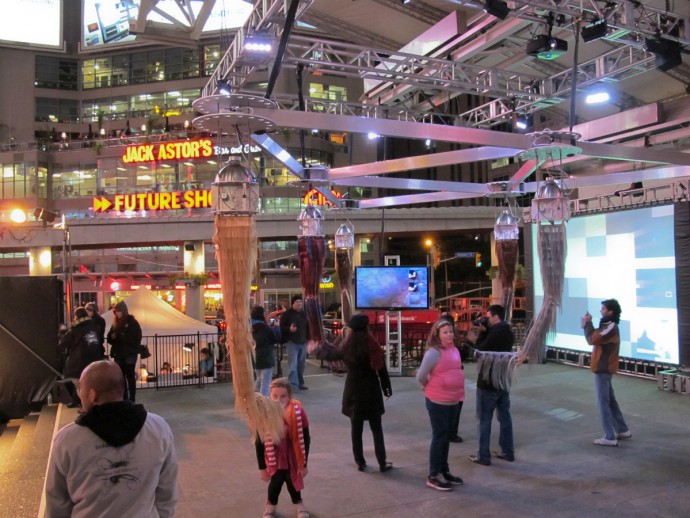
These robots take the multicultural makeup of any city and have each person’s unique look, creating a different soundscape. Each “face song,” combined with other facial soundscapes, makes an overall sonic human/robot experience.
These elements fused manifest the viewer as participant/actor/contributor and conductor in defining new ways of interacting with soft robots and creating a unique sonic and live-action robotics/video environment. As the robots show a level of advanced AI recognition and behavior, this can be considered an interspecies installation, with interactants sharing their faces with the AI computer code, responding intelligently and further modifying the algorithmic data based responses of the robots.
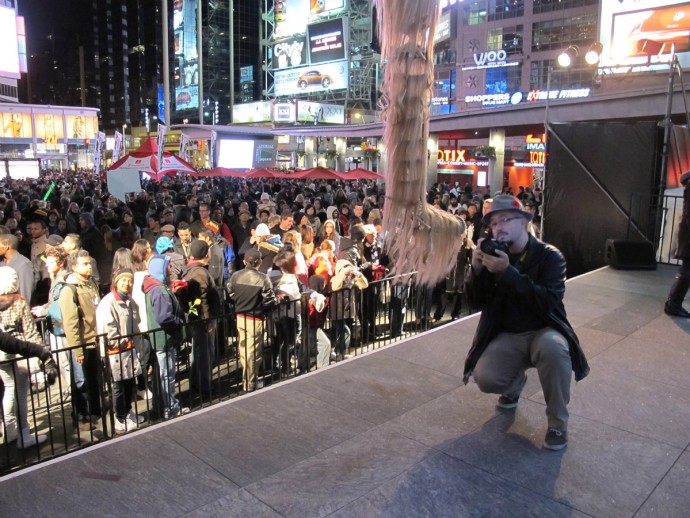
Another critical component of this work is projections of these many facial and digitized images above Yonge Dundas Square onto the LED screens that float above the city. These works will explore new morphologies of soft robotics, an emerging field where soft skins and gentle software code allow these robots to have an artificial sense of their environment and be more approachable than industrial robots.
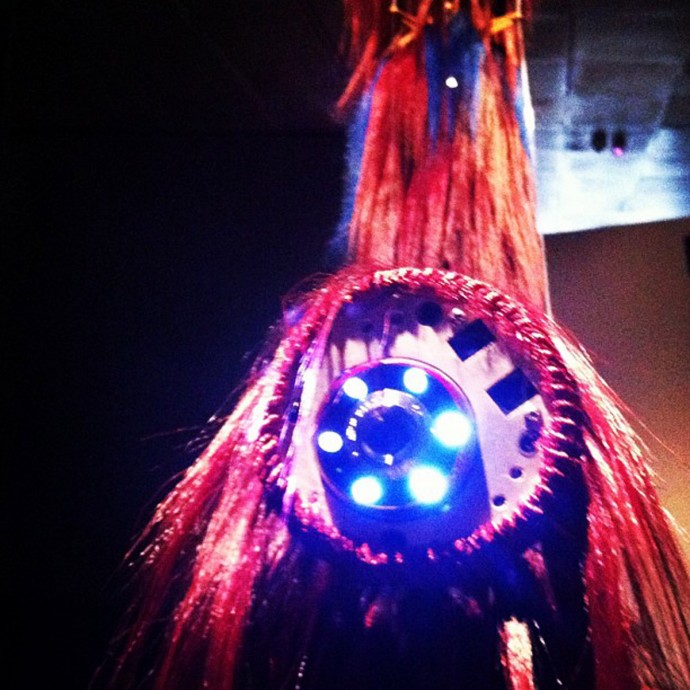
The question this art/science research posits; in the context of contemporary interactive and immersive electronic arts is; how can a robot structure, inform, enhance and magnify people’s behavior and interactions?
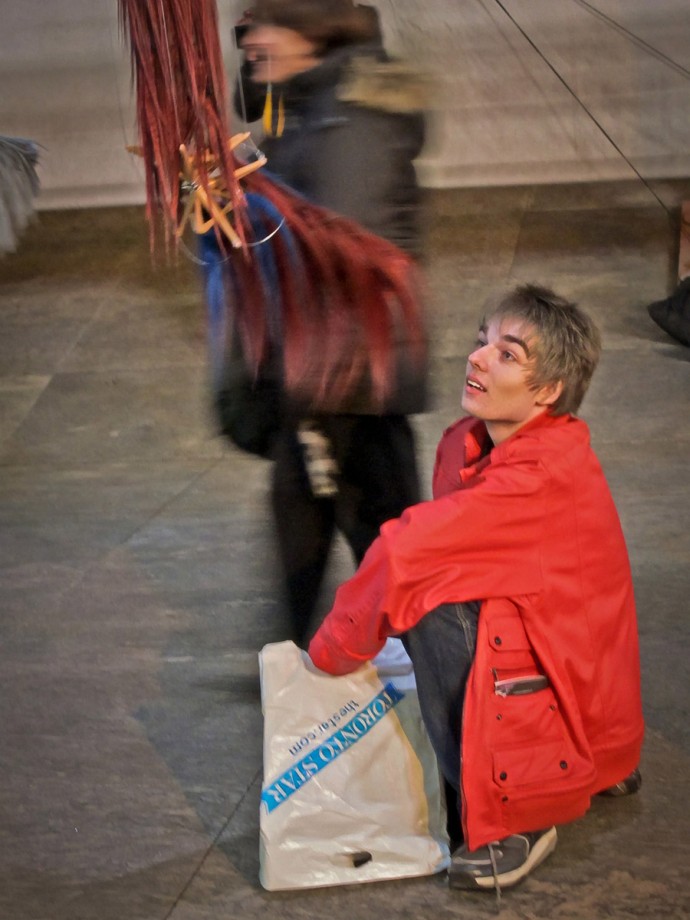
How can generative algorithms be scripted to compose and playback a unique and constantly evolving generative soundscape while maintaining and enhancing the viewer’s experience?
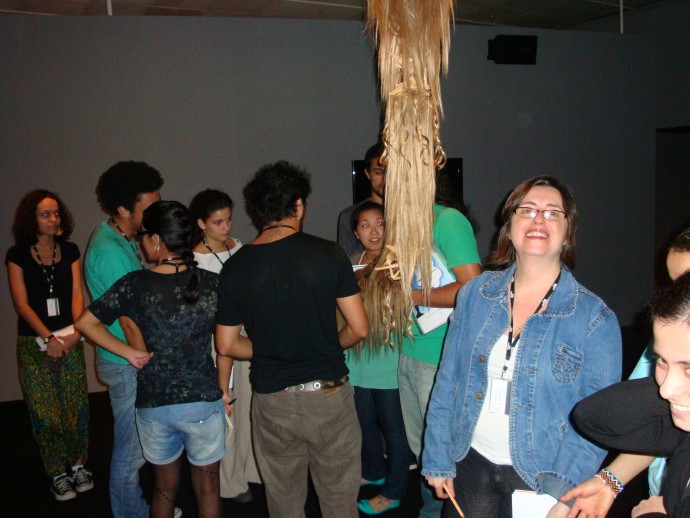
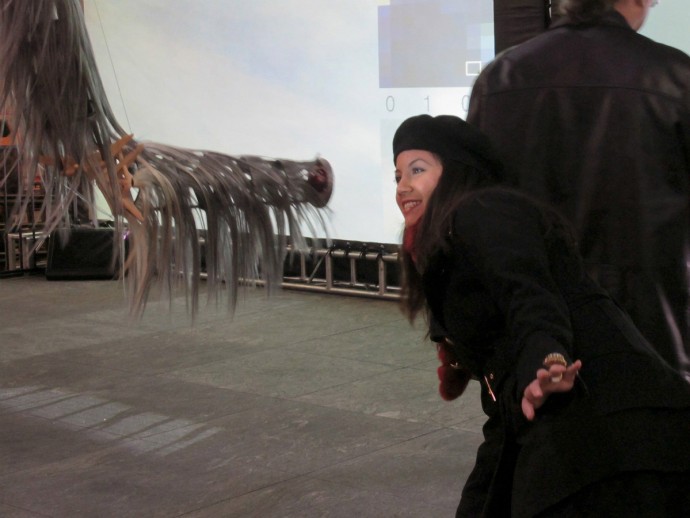 Premiere of Fusiform Polyphony by Ken Rinaldo at Yonge Dundas Square, Nuit Blanch 2011, commissioned by curator Shirley Madill
Premiere of Fusiform Polyphony by Ken Rinaldo at Yonge Dundas Square, Nuit Blanch 2011, commissioned by curator Shirley Madill
EXHIBITIONS:
MAKER MUSIC FESTIVAL New York, US May ~, 2023
Presentation of Fusiform Polyphony artificial intelligence swarm robots, making music from humans and the unique faces of any city.
ITAU CULTURAL Sao Paulo, Brazil, 2012
Face Music Installation and presentation invited by Guilherme Kujawski Ramos
NUIT BLANCHE Toronto Canada, Oct 2011
The premiere of commissioned Fusiform Polyphony: Face Music at Yonge Dundas Square and 2 Paparazzi Bots in the Eaton Centre. Invited and commissioned by curator Shirley Madill
BIBLIOGRAPHY
CATALOGS
Emocao Art.ficial 6.0 bienal internacional de Arte e technologia, catalog 2013 pgs. 18, 19, 77. Coverage of Face Music robotic work
REVIEWS
Wired Magazine Tech Art, Beyond the Beyond, by Bruce Sterling, March 13, 2014, Fusiform Polyphony review.
Dinmiid.com tech Art: Ken Rinaldo “Fusiform Polyphony”
VIEOOZ.US, Tech Art Ken Rinaldo & Tom Hawkins, March 13, 2014, Fusiform Polyphony review.
SOFTWARE CHALET.com, Music and Artificial Intelligence, March 13, 2014, Fusiform Polyphony review.
CREDITS / TECHNICAL
Ken Rinaldo: Design and concept
Construction and mechanical design: Ken Rinaldo
Construction: Nick Bontrager
3D modeling and rapid prototyping: Ken Rinaldo
MIDITRON interface design: Ken Rinaldo
Programming MAX MSP Jitter / Ableton Live: Nathaniel Hartman
Metal laser cutting and Fabrication of upper portion: AllFab Inc. Columbus Ohio
Network consulting OSU: Mike Kaylor & Sandy Shew
Lessons on building and programming interactive robots using MAX MSP and Jitter and Miditron (though no longer manufactured) Arduino lessons instead.
SHOW REQUIREMENTS & DIMENSIONS
This work can be displayed in a regular darkened room with spotlights in cans to illuminate individual sculptures. Five projection screens or white walls to receive projections. The best display space is a room 25 x 25 feet minimum size. Min ceiling height is 12 feet.
KEYWORDS
robotics, projections, futures robot, human tracking, sound, soft robotics, database
BIBLIOGRAPHY
Wired Magazine Tech Art, Beyond the Beyond, by Bruce Sterling, March 13, 2014, Fusiform Polyphony review.
Dinmiid.com tech Art: Ken Rinaldo “Fusiform Polyphony”
Emocao Art.ficial 6.0 bienal Internacional de Arte e technologia, catalog 2013 pgs. 18, 19, 77. Coverage of Face Music robotic work
SOFTWARE CHALET.com, Music and Artificial Intelligence, March 13, 2014, Fusiform Polyphony review.
VIEOOZ.US, Tech Art Ken Rinaldo & Tom Hawkins, March 13, 2014, Fusiform Polyphony review.
SOFTWARE CHALET.com, Music and Artificial Intelligence, March 13, 2014, Fusiform Polyphony review
The Columbus Dispatch, Columbus Company, uses lasers to build 3-D prototypes, layer by layer, By Amy Friedenberger, Sunday, September 8, 2013
